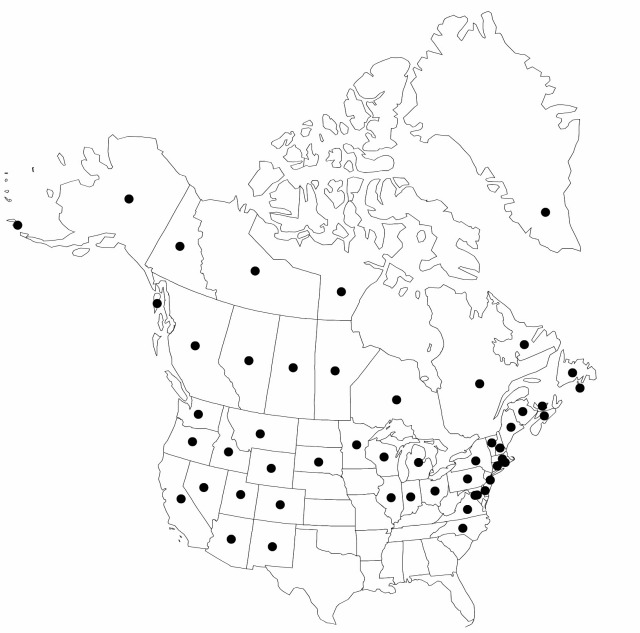Carex canescens
Sp. Pl. 2: 974. 1753.
Plants cespitose, in small and medium-sized clumps; rhizomes short. Culms erect, not stiff, 15–90 cm. Leaves: sheaths pale brown abaxially, inner band thin, hyaline, sometimes slightly red tinged, concave at summit; ligules slightly longer than wide; blades pale green to gray-green flat, 10–20(–30) cm × (1.5–)2–4 mm, subequal to shorter than culms, not stiff. Inflorescences 2–15 cm × 5–10 mm; proximal bracts shorter than to exceeding spikes; distal bracts usually scalelike. Spikes 4–8, gynecandrous, proximal ± remote, distal spikes approximate, sometimes flexuous, containing (5–)10–20(–30) perigynia suborbicular to oblong, 3–12 × 3–5 mm; terminal spike staminate for less than 1/2 of length, often clavate due to more conspicuous staminate part. Pistillate scales hyaline with green, 3-veined center when young, usually brownish tinged in age, broadly ovate, subequal to, not concealing perigynia, apex obtuse to acutish. Perigynia appressed-ascending, gray-green, becoming yellowish brown, obscurely many-veined, elliptic-ovate, 1.8–3 × 1.2–1.7 mm, widest near middle, membranous; beak abaxial suture inconspicuous, small marginal teeth. Achenes pale brown, oblong-obovate, 1.25–1.5 × 1–1.25 mm, dull to slightly glossy. 2n = 56.
Distribution

North America, South America, Eurasia, Australia, New Guinea.
Discussion
Subspecies 2 (2 in the flora).
Selected References
None.
Key
| 1 | Culms 15–60 cm; inflorescences 3–5(–7) cm, all but proximal spikes approximate or slightly remote. | Carex canescens subsp. canescens |
| 1 | Culms 30–90 cm, inflorescences 6–12(–15) cm, all but distalmost spikes distant, proximal 2 spikes 2–5 cm apart. | Carex canescens subsp. disjuncta |